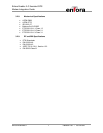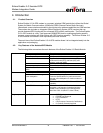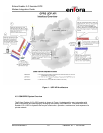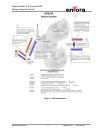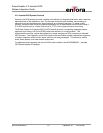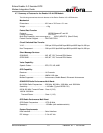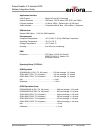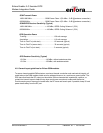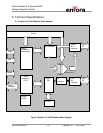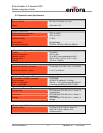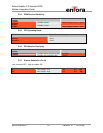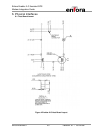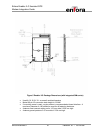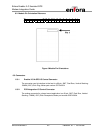
Enfora Enabler II-G Assisted GPS
Modem Integration Guide
GSM Transmit Power
1800/1900 MHz............................ GSM Power Class 1 (30 dBm ± 2 dB @ antenna connection)
850/900 MHz................................ GSM Power Class 4 (33 dBm ± 2 dB @ antenna connection)
GSM/GPRS Receiver Sensitivity (Typical)
1800/1900 MHz............................ <-106 dBm, GPRS Coding Scheme 1 (CS1)
850/900 MHz................................ <-106 dBm, GPRS Coding Scheme 1 (CS1)
GPS Operation Power
Tracking........................................ ……………. 106 mA average
Acquisition.................................... ……………. 116 mA average
Time to First Fix (cold start)………................... 60 seconds (typical)
Time to First Fix (warm start)…… ................... 35 seconds (typical)
Time to First Fix (hot start)……….................... 3 seconds (typical)
GPS Receiver Sensitivity (Typical)
1.5 GHz ........................................ -142 dBm, without assistance data
1.5 GHz ........................................ -158 dBm, with assistance data
4.8. General layout guidelines for Enfora GSM modules
To ensure lowest possible EMI emission, maximum thermal conduction and mechanical integrity, all
metal tabs on the GSM module shield must be soldered down on to a continuous ground plane. The
PCB trace that feeds the RF output port should be 50ohm characteristic impedance, coplanar, or
routed into internal layers to keep the top layer continuous around and underneath the device.
Provide ample ground vias around metal tabs, the RF trace and launch pad. If possible, keep I/O and
power traces away from the RF port.
MLG0208PB001 15 Version1.01 – 10/3/2006



